Overview
This article presents effective strategies for family-owned wineries aiming to enhance their wine sales through direct-to-consumer (DTC) methods. It outlines a comprehensive approach that encompasses:
- The optimization of e-commerce platforms
- The art of storytelling
- The hosting of engaging tasting events
- The enhancement of wine club memberships
Each strategy is underpinned by data illustrating significant revenue growth and improved customer engagement, providing a compelling case for wineries to adopt these practices.
Introduction
In a landscape where family-owned wineries strive to carve out their niche, implementing innovative strategies is essential for boosting sales and enhancing customer loyalty. By embracing direct-to-consumer (DTC) approaches, these vineyards can increase their market presence and foster deeper connections with their clientele. However, the challenge remains: how can these establishments effectively navigate the complexities of modern consumer preferences and competitive pressures? This article explores ten transformative strategies that empower family-owned wineries to elevate their sales while creating memorable experiences for their patrons.
Enocap: Transformative DTC Strategies for Family-Owned Wineries
Enocap stands at the forefront of transforming family-owned vineyards by prioritizing direct-to-consumer (DTC) strategies. This firm, leveraging data-driven insights, empowers wineries to enhance their market presence and establish robust distribution channels. Their comprehensive approach encompasses:
- Optimizing e-commerce platforms
- Refining brand narratives
- Executing effective demand generation strategies
- Enhancing wine club memberships
Clients of Enocap have experienced a remarkable average e-commerce growth of 191%, underscoring the effectiveness of these strategies in boosting revenue and enhancing customer engagement. Industry leaders assert that vineyards generating 60% or more of their revenue through DTC channels are significantly more likely to achieve profitability, highlighting the essential role of DTC in ensuring financial viability. Furthermore, 37% of wine producers have reported positive growth in DTC sales despite overall declines in visitation, demonstrating their resilience in navigating market challenges. As the landscape evolves, establishments that adopt these insights and DTC strategies will not only survive but thrive in a competitive market. To maximize success, family-owned vineyards must continuously refine their and storytelling initiatives, ensuring a profound connection with their audience.
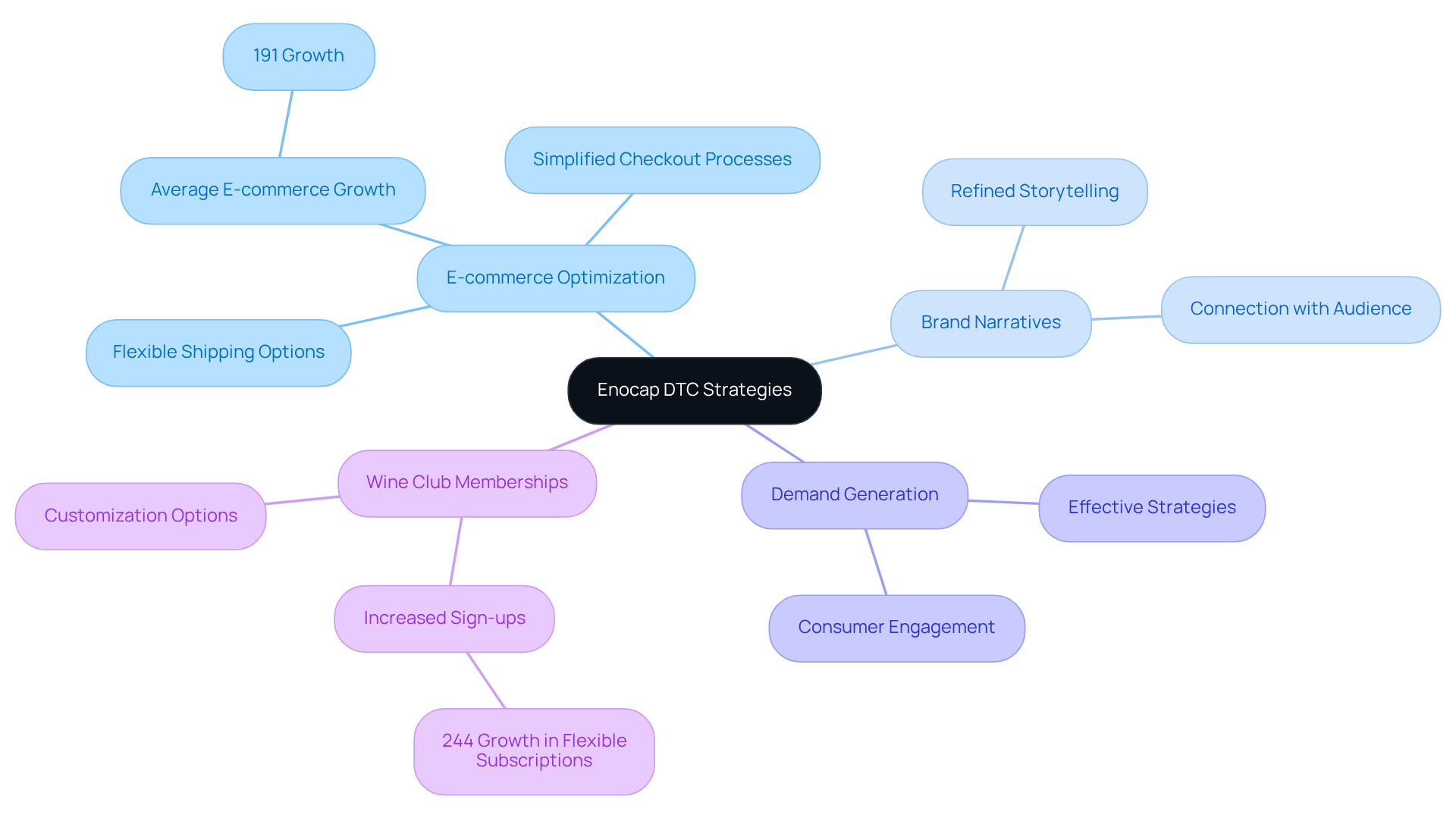
Train Staff to Recommend with Confidence
Investing in staff training is not just beneficial; it is essential for family-owned wineries that aim to boost sales and enhance their direct-to-consumer channels. Continuous training sessions must encompass extensive knowledge about beverages, including varietals, regions, and food pairings. This foundational knowledge is crucial for crafting engaging brand narratives that resonate with clients.
By encouraging staff involvement in tastings and providing cheat sheets that outline key selling points, wineries can significantly boost staff confidence and enhance the client experience. For instance, organizing pre-shift tastings allows staff to familiarize themselves with new beverages, equipping them to offer tailored suggestions efficiently. This proactive approach can lead to and increased revenue, as informed personnel are better positioned to interact with patrons and recommend beverages that can boost wine sales alongside their meals.
Furthermore, establishing a supportive training atmosphere motivates staff to inquire and seek assistance, ensuring they remain updated on the latest trends and offerings in the beverage sector. Notably, organizations that invest in employee training are 11% more profitable than those that do not, underscoring the financial benefits of prioritizing staff development. This aligns seamlessly with Enocap's strategic capital planning for sustainable growth.
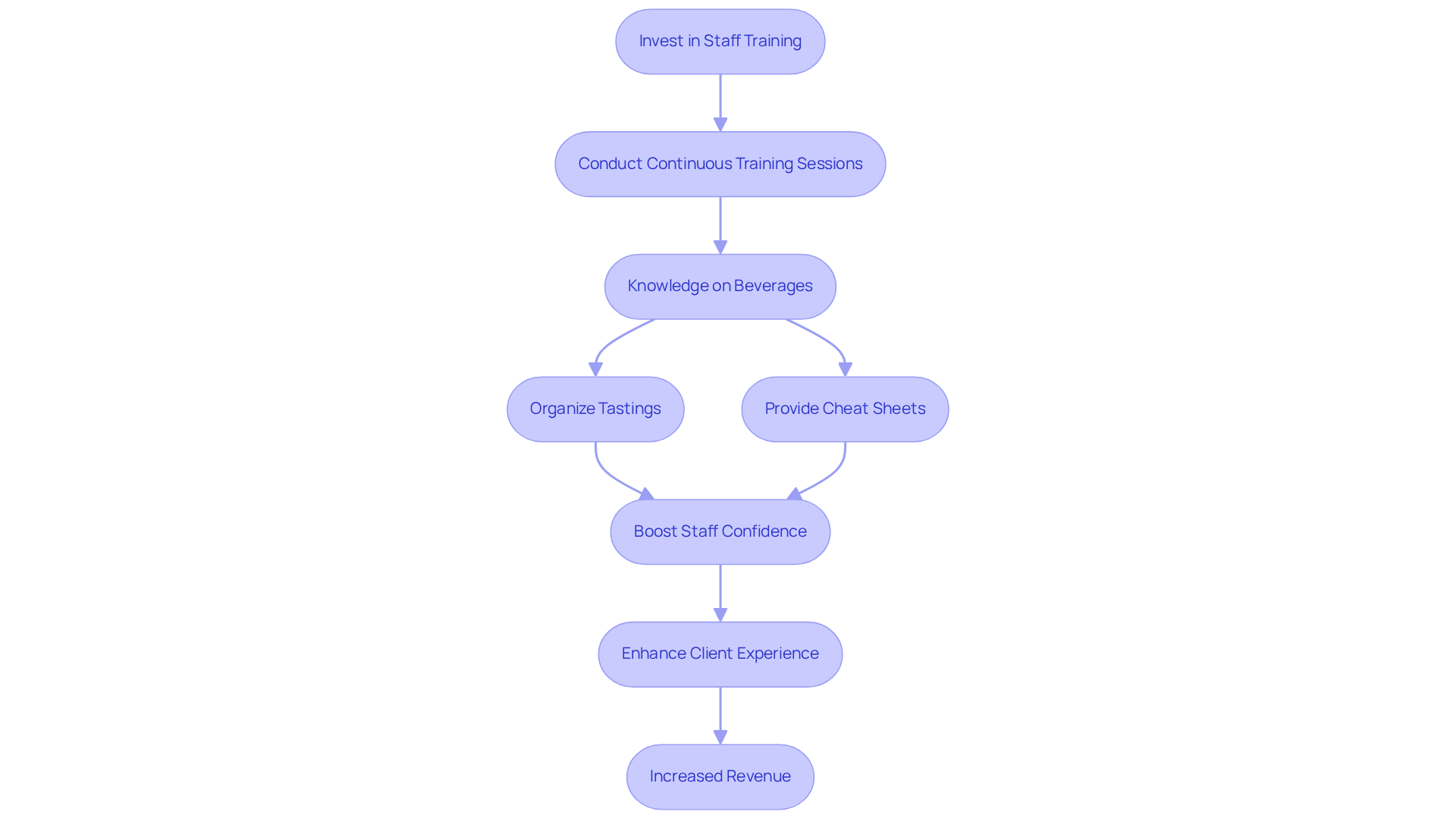
Simplify the Wine List for Better Upsells
Simplifying the wine list stands as a powerful strategy for enhancing consumer decision-making and boosting sales. By curating a selection that highlights the finest offerings, wine producers can effectively avoid overwhelming patrons with excessive options. Organizing the list by flavor profiles or food pairings not only streamlines the selection process but also empowers staff to confidently upsell premium options. This focused approach can significantly increase the average order value, as customers are more inclined to explore higher-priced selections when guided effectively.
For instance, wineries that have embraced curated lists of beverages report substantial increases in upsells, illustrating that a well-organized menu can enhance the dining experience while also helping to boost wine sales. As Alexia Klein, a prominent beverage expert, aptly observes, 'The contemporary drink menu should feel like an invitation, not a challenge.' This sentiment underscores the importance of a that improves patron satisfaction and fosters loyalty.
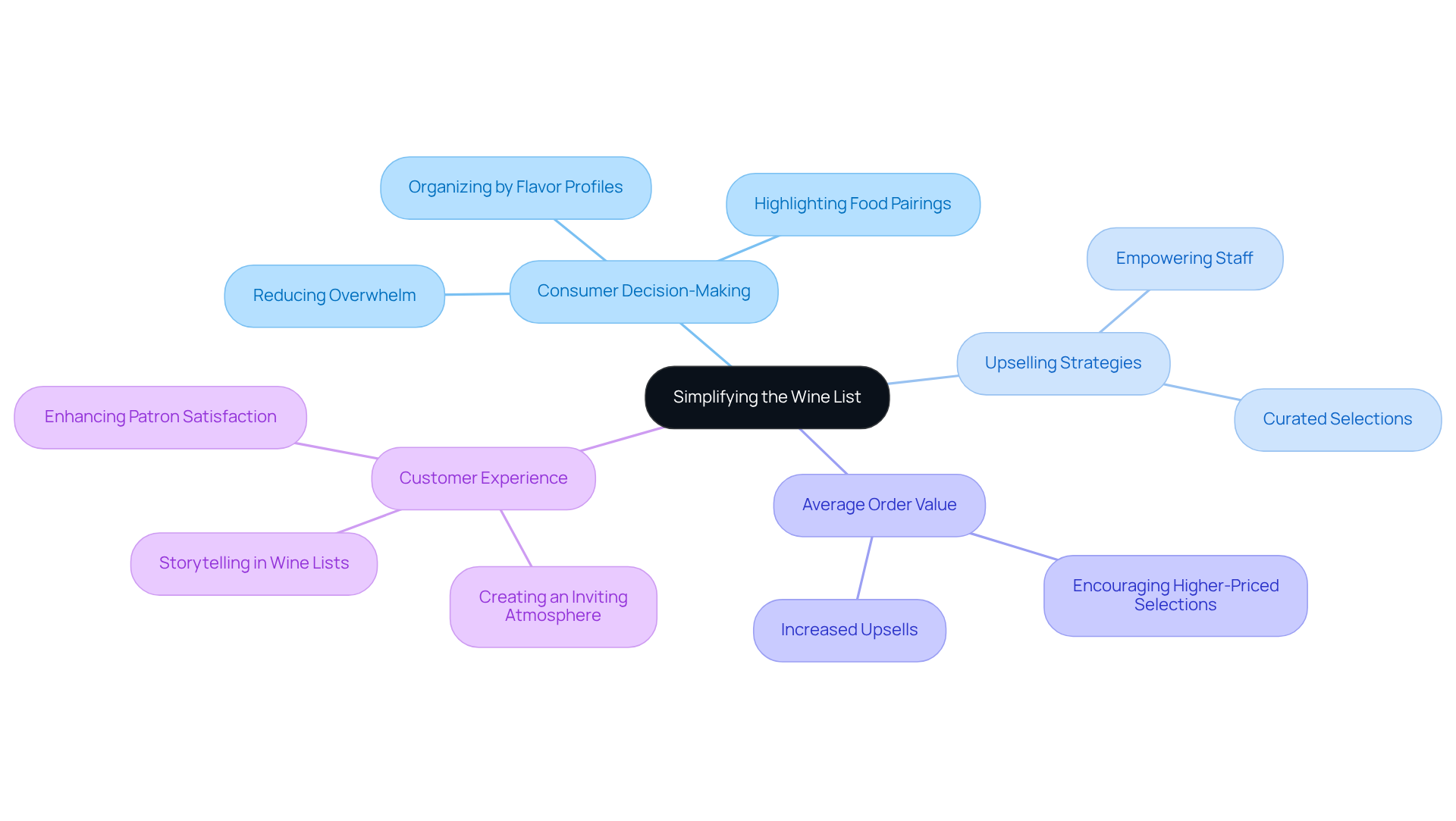
Leverage Storytelling to Sell the Experience
Harnessing the power of storytelling in marketing profoundly enhances the experience for family-owned vineyards. By sharing the vineyard's history, the passion that drives the winemaking process, and the unique characteristics of each beverage, brands create compelling narratives that resonate with consumers. Notably, stories are up to 22 times more memorable than facts alone, making them a powerful tool for engagement.
Over 70% of consumers prefer learning about products through content rather than traditional advertising, underscoring the effectiveness of storytelling. For instance, personal stories from the winemaker or an emphasis on sustainable practices forge emotional bonds, making clients more likely to select your wines over those from rivals.
Successful vineyards leverage these stories not only to engage their audience but also to , ultimately aiming to boost wine sales and promote brand loyalty. Enocap's approach to media storytelling emphasizes crafting narratives that connect with consumers, thereby enhancing the overall customer experience.
Effective storytelling communication should be organized with:
- 80% emotional content
- 20% brand recognition or promotion
This provides a clear framework for businesses to enhance their narratives. Furthermore, utilizing social media as a cost-effective platform to share these stories can significantly amplify their reach and impact. Strategic capital planning, including media placement and PR, ensures that family-owned wineries are well-positioned for sustainable growth, transforming casual buyers into loyal club members.
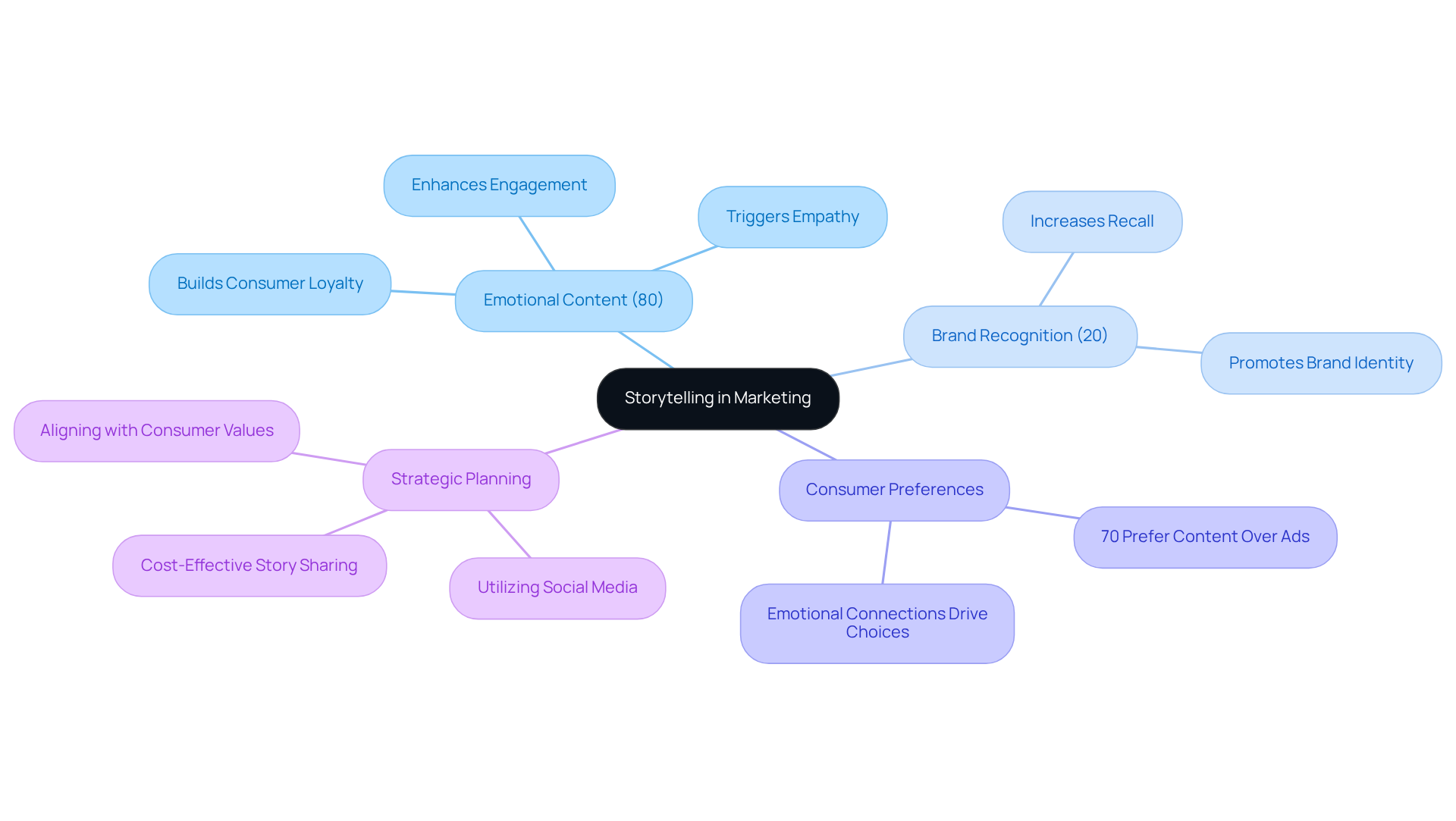
Offer Strategic Tastings and Pairing Flights
Organizing themed tastings and pairing flights is a highly effective strategy to boost wine sales and engage patrons. By curating events around specific themes—such as seasonal pairings or regional varieties—wineries can craft memorable experiences that invite exploration of diverse flavor profiles. This method enriches the tasting experience and transforms casual buyers into loyal club members, a crucial objective of Enocap's direct-to-consumer strategies.
Furthermore, weaving compelling narratives around these events deepens customer connections, rendering the experience both relatable and unforgettable. Educating guests on successful food and beverage pairings encourages them to purchase the featured selections, fostering a stronger bond between consumers and the products.
Wineries that have implemented have reported significant revenue increases, as these events align with sustainable direct-to-consumer channels that help boost wine sales and facilitate steady growth. Additionally, offering pairing flights allows guests to sample multiple wines, heightening their likelihood of making a purchase.
This strategy not only enhances customer interaction but also aims to boost wine sales, establishing it as a vital component of a marketing plan that supports the long-term success of family-owned vineyards. Moreover, integrating strategic capital planning into these events can aid vineyards in effectively allocating resources, ensuring that they maximize the potential of each tasting experience.
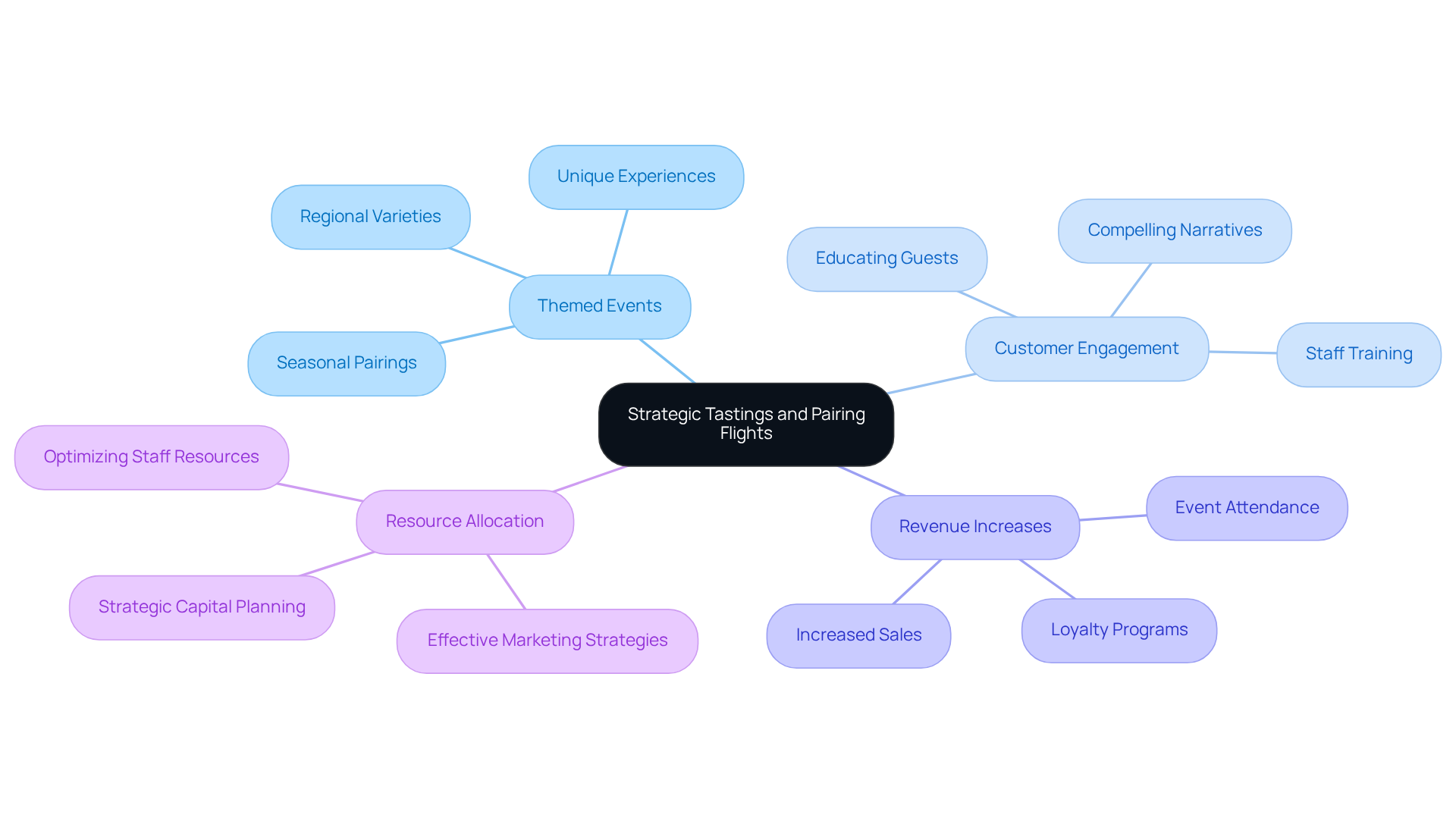
Create Seasonal or Limited-Time Wine Promotions
Seasonal and temporary promotions serve as powerful tools to boost wine sales in family-owned wineries, especially when aligned with Enocap's strategic capital advisory services. By crafting exclusive offers for holidays or special occasions—such as summer wine bundles or holiday gift packs—wineries can boost wine sales while instilling a sense of urgency among consumers.
Data reveals that nearly 86% of respondents purchased alcohol during the holiday season, highlighting the significant impact of seasonal promotions. Wineries that implement often experience a marked increase in revenue, which helps to boost wine sales, especially during peak seasons.
Leveraging Enocap's proven strategies to cultivate sustainable direct-to-consumer channels, producers can enhance visibility through email marketing, transactional emails, and social media platforms to promote these exclusive offers. This approach not only drives immediate purchases but also converts casual buyers into loyal club members.
Many buyers express a preference for unique, time-sensitive offers, underscoring the importance for vineyards to strategically align promotions with seasonal occasions to effectively boost wine sales and capture consumer interest.
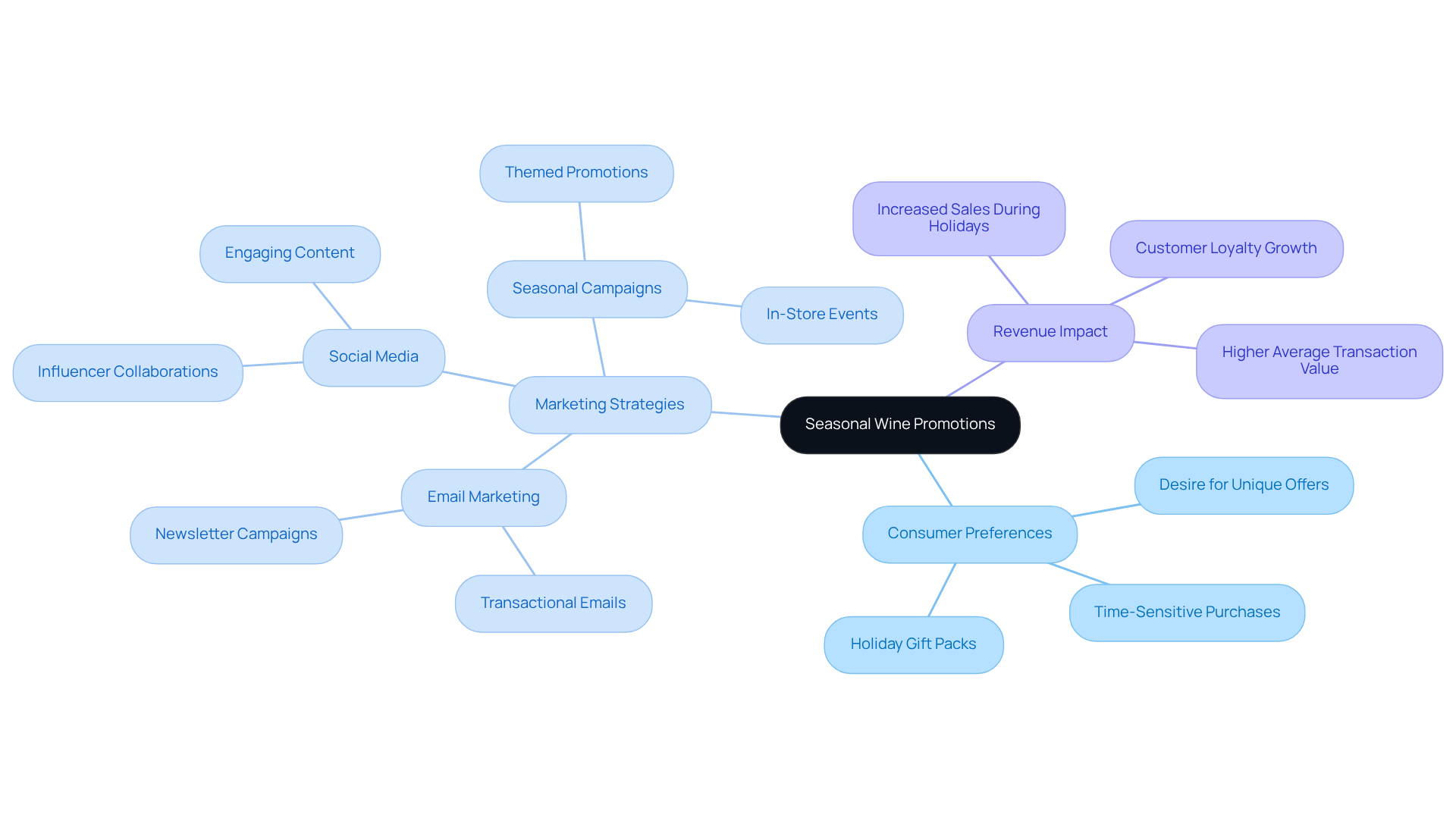
Implement Effective Demand Generation Techniques
To effectively boost wine sales, family-owned vineyards must adopt robust demand generation techniques that utilize the power of digital marketing. By implementing strategies such as search engine optimization (SEO) and content marketing, these vineyards can significantly boost wine sales while enhancing visibility and attracting prospective clients. For instance, producing captivating blog entries about wine pairings or showcasing behind-the-scenes videos of the winemaking process not only engages the audience but also fosters a stronger connection with them.
Email marketing serves as another essential tool for nurturing leads and sustaining client relationships. Keeping customers informed about new releases and exclusive promotions fosters loyalty and encourages repeat purchases. Wineries that can boost wine sales, potentially witnessing up to a 58% increase in online transactions, underscoring the impact of a well-executed digital strategy. To maximize this potential, vineyards should consider strategic capital planning to ensure they possess the necessary resources for growth and expansion.
Moreover, targeted advertising on social media platforms can amplify reach, as 87% of buyers believe social media influences their shopping decisions. By employing these digital marketing techniques—including organizing online tastings to establish personal connections with clients—family-owned vineyards can boost wine sales while fostering enduring relationships with their patrons, ensuring sustainable growth in a competitive market. As a practical suggestion, vineyards should consistently evaluate their promotional activities and adjust strategies based on client feedback and revenue data to continually refine their approach.
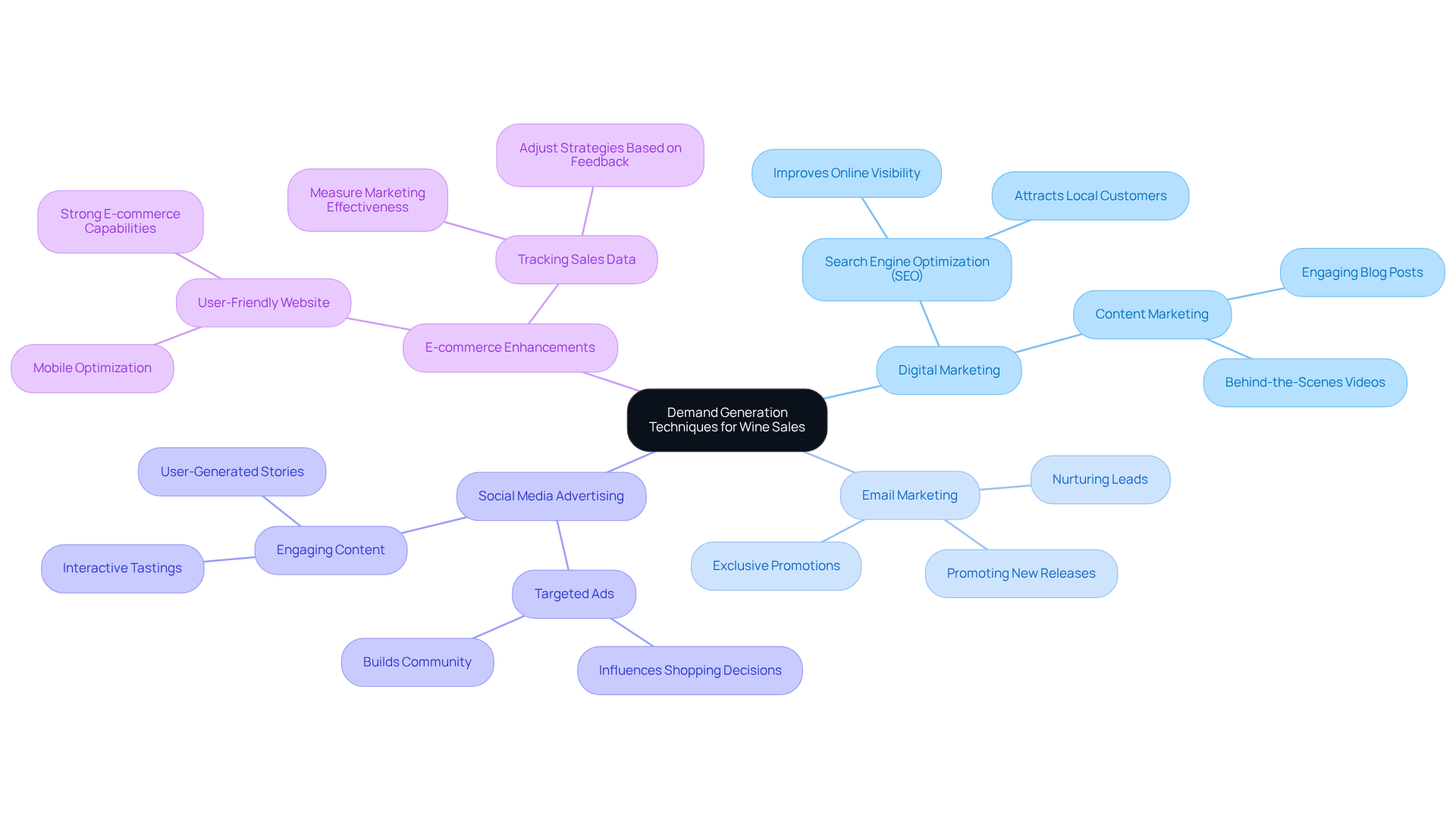
Leverage Social Media Marketing
For family-owned wineries looking to boost wine sales, leveraging social media marketing is essential. Platforms like Instagram and Facebook present a unique opportunity to visually showcase products and engage with clients, transforming casual buyers into loyal club members. High-quality images of vineyards, wine bottles, and tasting events can captivate potential followers, establishing a robust brand presence.
Furthermore, running targeted ads can significantly boost wine sales by promoting special offers and events to a wider audience—an essential strategy for generating predictable DTC revenue. Engaging with followers through comments and messages nurtures community and loyalty, encouraging repeat business.
Moreover, sharing behind-the-scenes content and user-generated posts fosters authenticity, allowing patrons to feel a deeper connection to the establishment. To further strengthen client relationships, vineyards should:
- Maintain a consistent posting schedule
- Utilize analytics to refine strategies
- Consider strategic capital planning to support growth initiatives
By implementing these practical suggestions, vineyards can effectively boost wine sales while promoting sustainable development.
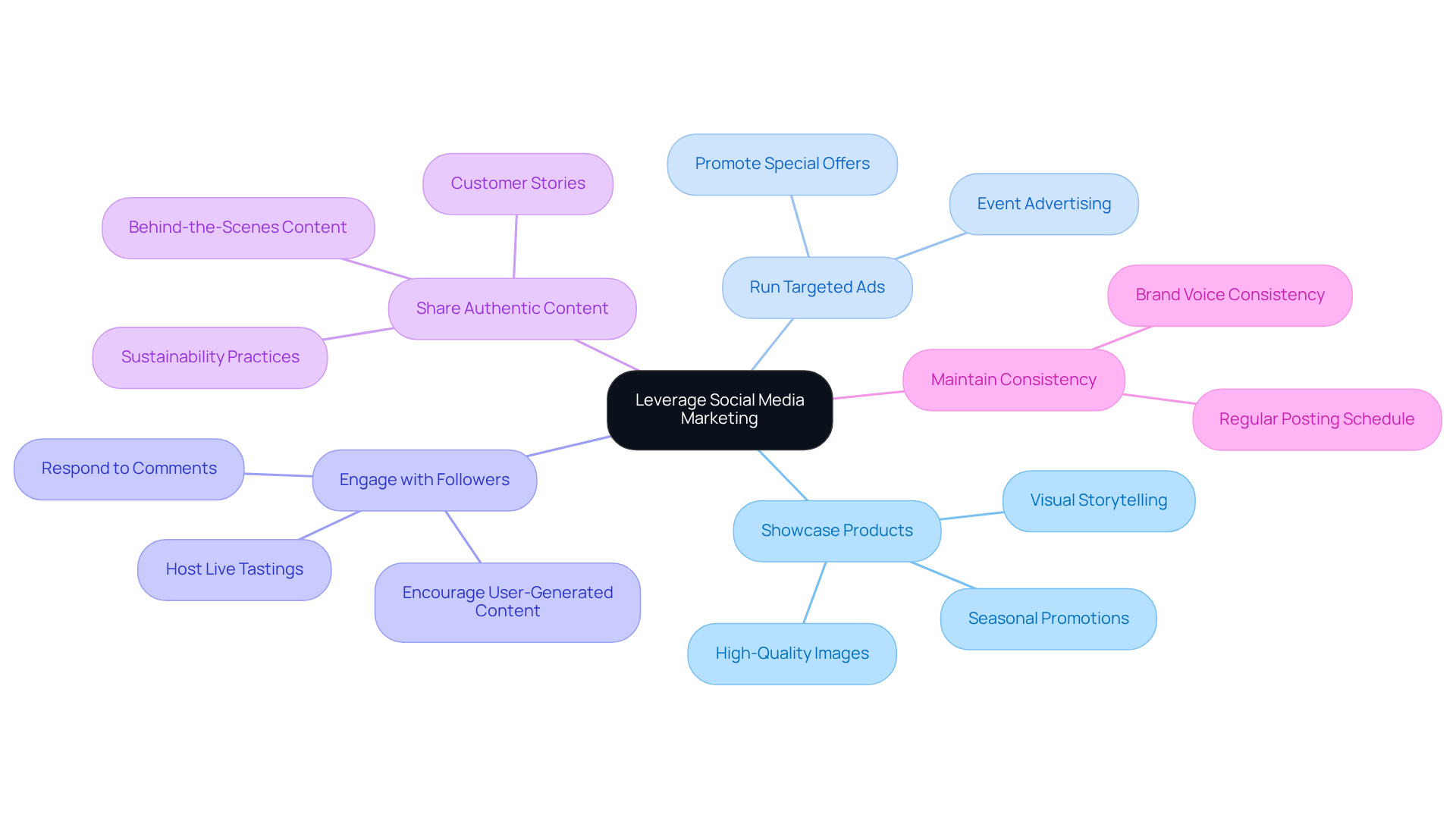
Host Engaging Wine Tasting Events
Organizing captivating wine tasting gatherings serves as a powerful strategy for attracting clients and boosting sales, particularly for family-operated vineyards seeking to enhance their direct-to-consumer pathways. To distinguish themselves, wine producers must craft that go beyond conventional tastings. This may encompass themed events, curated food pairings, or educational workshops that offer profound insights into the winemaking process. For example, Dr. Konstantin Frank Winery's Austrian-themed event showcased live music and traditional dishes, elevating the tasting experience and appealing to food enthusiasts and local patrons alike.
Collaborating with local chefs or artisans not only enriches the experience but also expands the audience reach, transforming casual buyers into loyal club members through proven strategies. Promoting these events through social media and targeted email marketing is essential for maximizing attendance and boosting wine sales while generating excitement around your establishment. Notably, Dr. Konstantin Frank Winery successfully grew its holiday market from 150 to over 1,000 attendees in just four years, illustrating the potential of well-executed events.
Moreover, establishments that focus on creating unforgettable, immersive experiences are likely to witness improved patron retention, as consumers increasingly seek genuine and shareable moments in their beverage journeys. In fact, 61% of Temecula’s visitors in 2025 were already club members, highlighting the effectiveness of targeted marketing strategies in cultivating a loyal clientele. By prioritizing experiential marketing, vineyards can nurture deeper connections with their customers, ultimately driving loyalty and repeat visits while ensuring sustainable growth for generations.
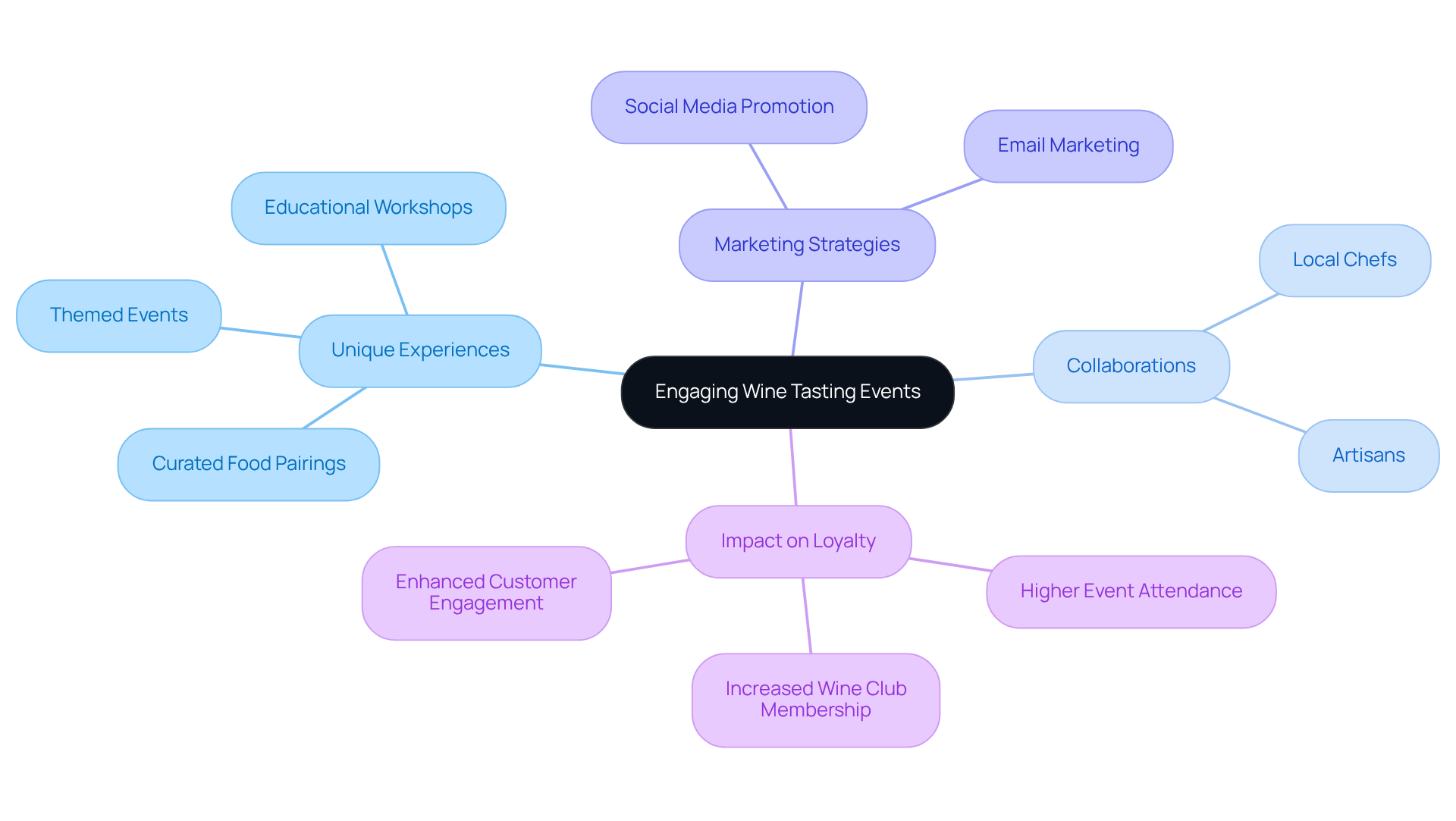
Optimize Wine Club Memberships
To fully harness the potential of , family-owned vineyards must prioritize the enhancement of their offerings to boost wine sales. This involves providing unique advantages that resonate with members, such as:
- Early access to new releases
- Members-only events
- Personalized beverage suggestions tailored to individual preferences
Engaging with members through regular newsletters and updates is essential for maintaining excitement and connection to the brand. For example, wineries like Clif Family Winery have successfully implemented flexible subscription models, resulting in a remarkable 244% increase in sign-ups, particularly among younger consumers who value convenience and personalization.
Moreover, establishing a referral program can incentivize current members to attract new clients, effectively expanding the club's reach. Exclusive benefits, such as:
- Invite-only beverage dinners
- Private tours
not only enhance the allure of memberships but also serve to boost wine sales and contribute to higher retention rates. Research indicates that wine clubs offering substantial savings and unique experiences witness increased loyalty, with some clubs achieving annual retention rates of up to 15%. By focusing on these strategies, including the integration of technology and community-building initiatives through social media and interactive events, businesses can cultivate a thriving community of engaged members. This approach not only drives predictable DTC revenue but also secures the long-term success of family-owned wineries in an increasingly competitive market.
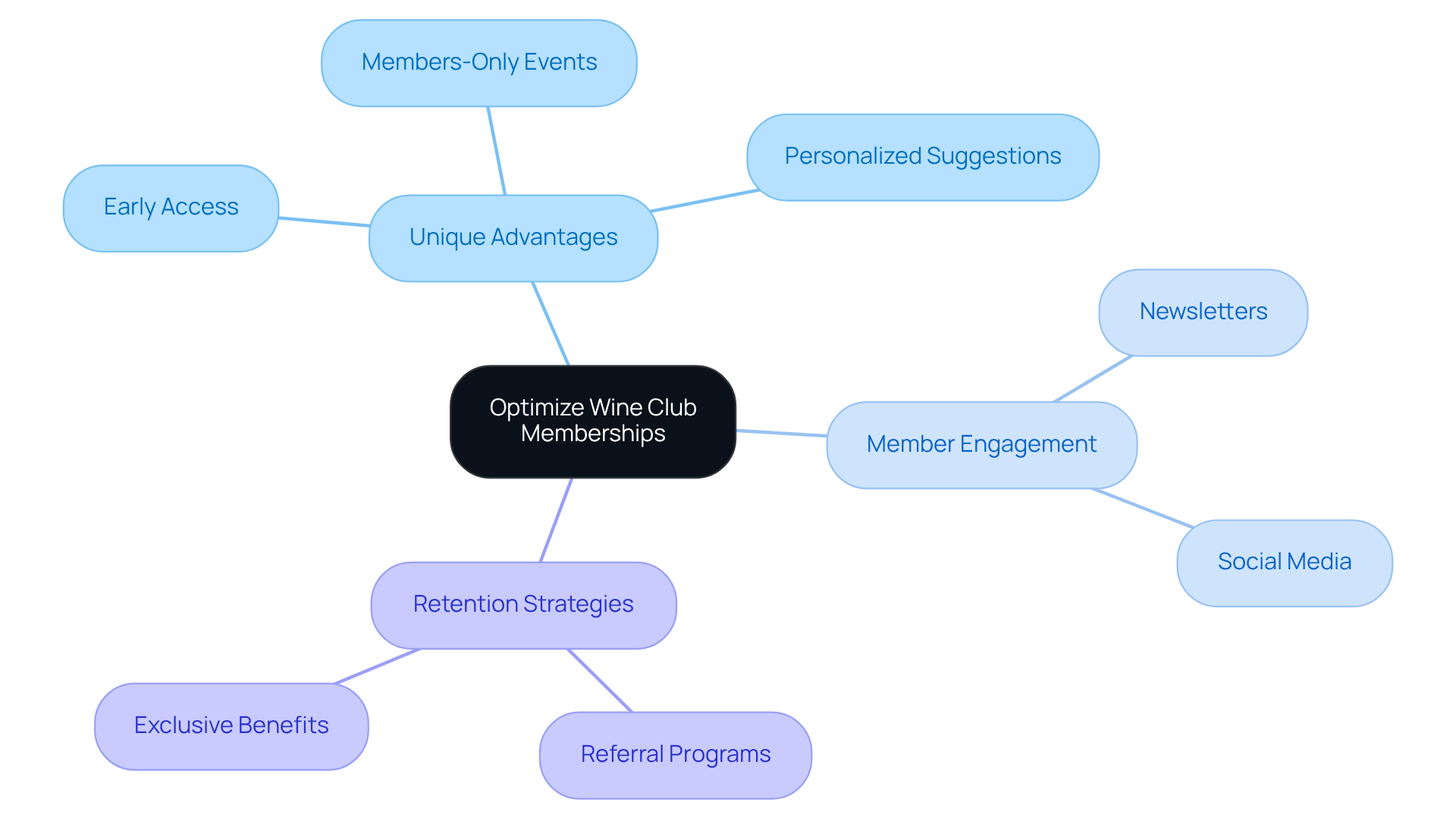
Conclusion
Family-owned wineries stand at a pivotal crossroads, with a unique opportunity to thrive in a competitive market by adopting innovative strategies centered on direct-to-consumer (DTC) sales. By leveraging data-driven insights and implementing tailored marketing techniques, these wineries can significantly enhance their market presence and foster deeper connections with their customers. Embracing DTC strategies is not merely a choice; it is a necessity that ensures financial viability while creating lasting relationships with patrons.
Key strategies include:
- Optimizing e-commerce platforms
- Simplifying wine lists
- Utilizing storytelling
These emerge as essential components for boosting wine sales. Staff training is crucial in enhancing customer experiences, while themed tastings and seasonal promotions serve as engaging methods to attract consumers. Furthermore, effective demand generation techniques and social media marketing are vital for reaching a wider audience and nurturing loyalty among existing customers.
The journey of a family-owned winery transcends the mere act of selling wine; it is about crafting memorable experiences and building a community around their brand. By adopting these strategies and continuously refining their approach, wineries can not only increase their sales but also secure their place in the hearts of wine enthusiasts. Embracing innovation and storytelling will ultimately transform casual buyers into loyal club members, ensuring sustainable growth for generations to come.
Frequently Asked Questions
What is Enocap and how does it benefit family-owned wineries?
Enocap is a firm that focuses on transforming family-owned vineyards by implementing direct-to-consumer (DTC) strategies. It helps wineries enhance their market presence and distribution channels through data-driven insights, optimizing e-commerce platforms, refining brand narratives, executing demand generation strategies, and enhancing wine club memberships.
What results have clients seen from Enocap's strategies?
Clients of Enocap have experienced an average e-commerce growth of 191%, indicating that these strategies effectively boost revenue and enhance customer engagement.
Why is DTC revenue important for vineyards?
Vineyards generating 60% or more of their revenue through DTC channels are significantly more likely to achieve profitability. This highlights the essential role of DTC in ensuring the financial viability of wineries.
How have wine producers fared in DTC sales during market challenges?
Despite overall declines in visitation, 37% of wine producers have reported positive growth in DTC sales, demonstrating their resilience in navigating market challenges.
What should family-owned vineyards focus on to thrive in a competitive market?
Family-owned vineyards must continuously refine their client retention strategies and storytelling initiatives to ensure a profound connection with their audience.
Why is staff training important for family-owned wineries?
Staff training is essential for boosting sales and enhancing direct-to-consumer channels. It equips staff with extensive knowledge about beverages, enabling them to craft engaging brand narratives and confidently recommend products to customers.
How can wineries enhance staff confidence and improve client experience?
Wineries can enhance staff confidence by involving them in tastings, providing cheat sheets with key selling points, and organizing pre-shift tastings to familiarize them with new beverages. This proactive approach leads to better customer interactions and increased revenue.
What financial benefits come from investing in employee training?
Organizations that invest in employee training are 11% more profitable than those that do not, highlighting the financial advantages of prioritizing staff development.
What is the benefit of simplifying the wine list for consumers?
Simplifying the wine list enhances consumer decision-making and boosts sales by curating a selection that highlights the best offerings, avoiding overwhelming patrons with excessive options.
How can a well-organized wine list increase sales?
Organizing the wine list by flavor profiles or food pairings empowers staff to confidently upsell premium options, significantly increasing the average order value as customers are more inclined to explore higher-priced selections.
What is the ideal approach to a contemporary drink menu?
A contemporary drink menu should feel like an invitation rather than a challenge, emphasizing the importance of a simplified and engaging beverage list that improves patron satisfaction and fosters loyalty.




